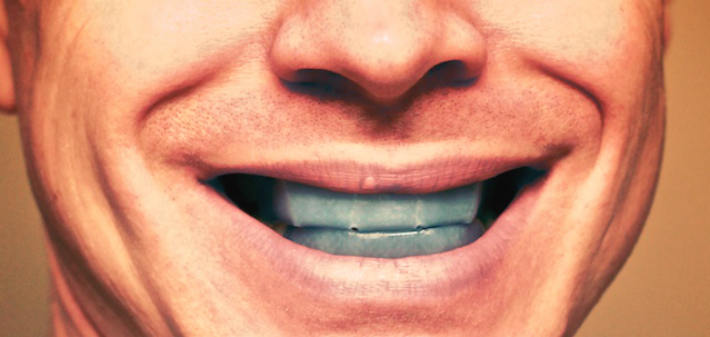Teeth whitening has become increasingly popular as a cosmetic dental procedure, promising brighter smiles and increased confidence. While the desire for whiter teeth is understandable, there are concerns about the potential risks associated with excessive teeth whitening. This article aims to delve into the effects of frequent and intense teeth whitening treatments, examining both the benefits and potential drawbacks to help individuals make informed decisions about their oral health.
Understanding Teeth Whitening
Before discussing the risks, it’s essential to understand how teeth whitening works. Teeth can become discolored or stained due to various factors, including:
Extrinsic Stains: These are stains on the outer layer of the tooth (enamel) caused by consumption of certain foods and beverages (coffee, tea, red wine) or habits like smoking.
Intrinsic Stains: These are stains that occur within the tooth structure, often due to factors like aging, trauma, or certain medications.
Teeth whitening procedures typically involve the use of bleaching agents, such as hydrogen peroxide or carbamide peroxide, to lighten the color of the teeth. This can be done professionally in a dental office or at home using over-the-counter products under dental supervision.
see also: How Long Does Hismile Teeth Whitening Last?
Benefits of Teeth Whitening
The primary benefit of teeth whitening is aesthetic improvement, enhancing the brightness of the smile and boosting self-confidence. Key advantages include:
Improved Appearance: Whitening can effectively remove stains and discoloration, restoring a youthful and vibrant smile.
Non-Invasive: Compared to other cosmetic procedures like veneers or crowns, teeth whitening is generally non-invasive and can often be performed without altering the tooth structure.
Boost in Self-Esteem: Many individuals report feeling more confident and socially comfortable with whiter teeth.
Risks of Excessive Teeth Whitening
While teeth whitening is generally safe when performed correctly, excessive or improper use can lead to several potential risks:
1. Tooth Sensitivity:
One of the most common side effects of teeth whitening is increased tooth sensitivity. This sensitivity can occur during the whitening process or persist after treatment. It usually occurs because the bleaching agents penetrate the enamel and reach the dentin, irritating the nerve of the tooth. Symptoms may include pain or discomfort when consuming hot, cold, or acidic foods and beverages.
2. Gum Irritation:
Overuse of whitening products or improper application techniques can lead to gum irritation. This may manifest as gum sensitivity, redness, or even chemical burns in severe cases. Ensuring proper placement of whitening agents and protecting the gums during treatment is crucial to minimize these risks.
3. Enamel Damage:
While rare, excessive use of abrasive whitening products or high-concentration bleaching agents can potentially damage the tooth enamel. Enamel erosion can make teeth more susceptible to decay and sensitivity over time. Professional supervision and adherence to recommended treatment guidelines help mitigate this risk.
4. Uneven Results and Over-Whitening:
Attempting to achieve overly white teeth through excessive whitening can lead to uneven results and unnatural appearance. Teeth may appear translucent or have a chalky appearance if the enamel becomes too thin. Professional guidance ensures a balanced approach to achieve natural-looking results.
Guidelines for Safe Teeth Whitening
To minimize the risks associated with teeth whitening and achieve optimal results, consider the following guidelines:
Consultation with a Dentist: Before starting any whitening treatment, consult with a dental professional. They can assess your oral health, determine the cause of discoloration, and recommend the most appropriate whitening method.
Follow Instructions Carefully: Whether using over-the-counter products or undergoing professional treatment, follow the instructions provided by your dentist or the product manufacturer meticulously.
Use Professional Supervision: Professional dental supervision ensures customized treatment plans, appropriate concentrations of bleaching agents, and protective measures for gums and tooth enamel.
Manage Expectations: Understand that natural teeth have a certain shade limit, and excessive whitening may not achieve the desired results. Aiming for a natural-looking enhancement is key to maintaining oral health.
Long-Term Oral Care After Whitening
Once you’ve achieved your desired level of whiteness, maintaining oral hygiene and regular dental visits are essential to prolonging the results:
Brushing and Flossing: Maintain a consistent oral hygiene routine to prevent new stains and maintain oral health.
Moderation in Consumption: Limit consumption of staining foods and beverages, and consider using a straw to minimize contact with teeth.
Regular Dental Check-Ups: Schedule routine dental visits for professional cleanings and oral health assessments to address any concerns promptly.
Conclusion
In conclusion, while teeth whitening can enhance the aesthetic appearance of your smile and boost self-confidence, excessive or improper use can pose risks to oral health. By understanding the potential risks and benefits of teeth whitening, consulting with a dental professional, and following recommended guidelines, individuals can achieve safe and effective results. Remember, maintaining oral health and seeking professional advice are crucial steps towards achieving and preserving a bright and healthy smile.

